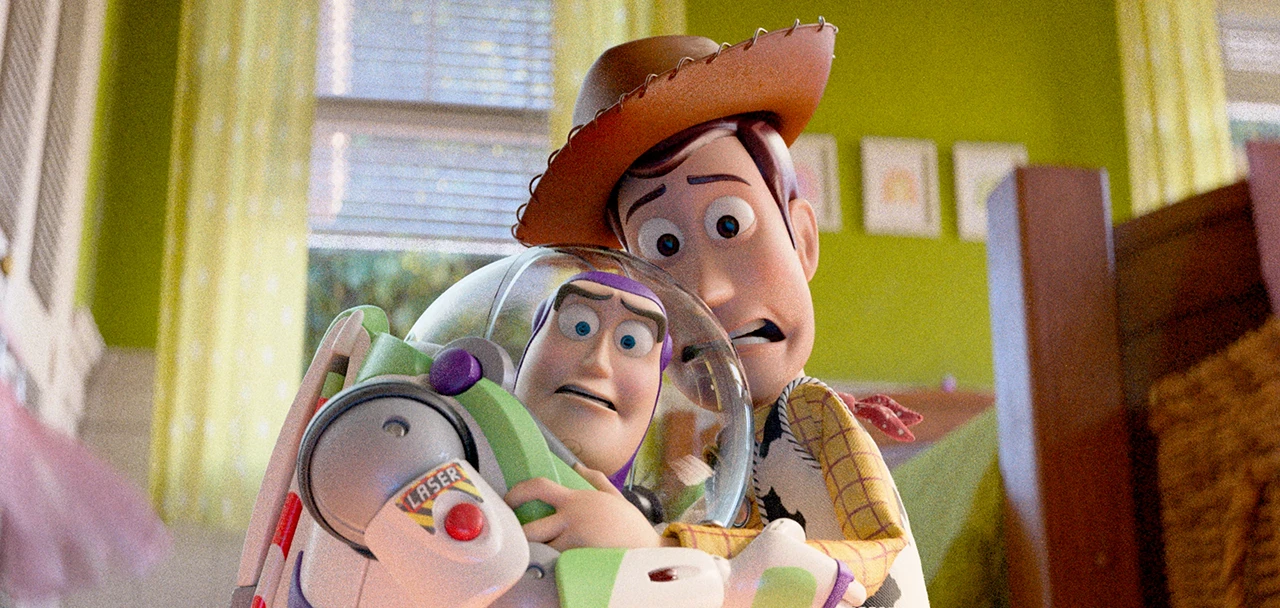RenderMan®
World's Most Versatile Renderer
With a new state-of-the-art framework optimized for physically-based rendering, RenderMan can deliver unmatched flexibility for any production pipeline.
Jurassic Park Rebirth © Universal Pictures
With a new state-of-the-art framework optimized for physically-based rendering, RenderMan can deliver unmatched flexibility for any production pipeline.
Outstanding Features, Performance, and Price - See what RenderMan can do for your creative vision.
Get RenderManRenderMan delivers out-of-box production tools straight from Pixar and ILM, including materials and light transport...no development required.
Physically based shading allows RenderMan to deliver highly realistic lighting with minimal setup, including full support for multi-bounce ray traced global illumination and ray traced subsurface scattering.
Thanks to a collaborative effort between Pixar and Industrial Light & Magic, RenderMan ships with a state-of-the-art material layering system called MaterialX Lama, a component of the MaterialX standard.
Pixar materials come fully loaded with all of the creative options for look development demanded by the shading artists at Pixar. Use Pixar Surface to create everything from glass to the most incredibly subtle skin you can image.
This new library of physically based lights offers standard features like color temperature, exposure, and IES profiles … but also includes specialized Light Filters which have been developed for feature film.
RenderMan has seamless Xgen integration with Maya and supports the leading plugins, including Unreal Shave and Haircut, and Peregrine Labs' Yeti.
Production Denoising
RenderMan ships with a state-of-the-art Denoiser, which uses machine learning and is trained with Pixar datasets, significantly reducing render times.




Toy Story 5 © Disney/ Pixar
Now available interactively in all bridge products and XPU, the RenderMan Denoiser is a completely new state-of-the-art denoising technology developed by Disney Research, which takes a new approach to denoising, using machine learning and training data from Disney and Pixar.
-Eric Wachtman - CG Supervisor, LAIKA
Limitless Creativity
The innovative Stylized Looks toolset allows RenderMan to deliver images beyond photorealism. Artists can render images that look like cartoons and illustration.
Move beyond physically based shading and lighting into a world where you can easily create a variety of styles for your projects. You can non-destructively control outlines, create sketch patterns, and develop a wide range of unique looks, including Anime, by using the same familiar toolset. This flexible system is limited only by imagination.
Ultraman Rising © Netflix
![]()
For studios using the latest pipeline tech, RenderMan can render directly to USD Hydra. Learn how Pixar uses USD in our Pipeline.
A key aspect of RenderMan is support for the Houdini native USD “Solaris” workflows, enabled by RenderMan’s USD Hydra delegate. These new tools are the result of close collaboration between SideFX and Pixar’s RenderMan & USD teams.
Native USD workflows are also being embraced and developed in the Katana and Maya toolsets.
Toy Story 4 © Disney/ Pixar
RenderMan ships with MaterialX Lama, a new layered material system developed by Industrial Light & Magic to meet the needs of the most demanding visual effects.
ILM's innovations with MaterialX Lama are exemplified in films and series such as The Creator, and The Mandalorian and are being shipped with RenderMan thanks to a longstanding technical collaboration.
MaterialX Lama allows you to mix and match entire material networks and layer them modularly. This system, a component of the MaterialX standard, is flexible and incorporates the latest developments in shading.
-André Mazzone - Look/Render Engineering Lead, ILM
Resource Agnostic
With RenderMan XPU™ artists can greatly speed up their look development workflows by harnessing the power of their GPU and can expect perceptually identical results when rendering final frames.
Pixar’s hybrid solution for CPU + GPU rendering combines available computing resources to accelerate production path-tracing, leveraging the latest developments in multi-core CPU and GPU hardware. XPU has been developed to handle the scale and complexity of Pixar’s feature animation projects.
Volumes & Particles
Smoke, fire, clouds, dust, OpenVDB... RenderMan can render it better and faster than ever with XPU support.
Twisters © Universal Pictures, Warner Bros. Pictures and Amblin Entertainment
Checkpointing
RenderMan has the ability to resume interrupted renders, redefining the animation approval process.
Checkpointing allows the renderer to make repeated passes over the image, refining it a bit more with each pass. While the image will be quite noisy during the initial passes, it is usually sufficient to give an impression of how the final image will look, instead of having to wait for a final frame, allowing daily reviews and more iterations of animated sequences.
Secondary Passes
RenderMan AOV and LPE passes can be edited interactively, providing artist friendly and robust workflows for compositing.
RenderMan provides elegant methods for breaking visual effects down into secondary passes for compositing, including DeepEXR and Cryptomatte support. With support for both AOVs and Light Path Expressions, RenderMan offers a multitude of ways of writing any element of a render (SSS, Diffuse, Shadows, Z-Depth, Object IDs, Per-Light AOVs, etc.) into many popular formats.
Compositing CGI elements over live action is crucial for VFX work and the new Holdout Workflow in RenderMan makes this process simple, making it straight forward to capture shadows, reflections, and other elements to combine them with a background plate during interactive rendering.
Integrators
RenderMan has a unique way of dealing with light transport, by giving artists and developers creative control over camera rays.
RenderMan provides 3 out-of-the-box production integrators, including Pixar's own integrator, Pixar Unified, which has been battle tested in all the latest Pixar productions.
The integrator system provides all the necessary tools for studios to write their own integrators, allowing development teams creative and non-destructive freedom to experiment with cutting-edge technology, as exemplified by our new Stylzed Looks toolset.
RenderMan's motion blur and depth-of-field can mimic the behavior of real-world cameras, so RenderMan's synthetic images can realistically simulate their conventionally filmed counterparts.
RenderMan is fully capable of delivering high-resolution animation for VR, including the new omnidirectional stereo. Simply render with the VR camera.
In live action film, motion blur is the result of objects moving during the exposure of the film. The faster the exposure, the less things will blur. Conversely, a long exposure results in more motion blur. Audiences are quite familiar with the look of motion blur and creating this effect in 3D fast and efficiently is critical for convincing visual effects. Pixar's RenderMan can mimic the behavior of real cameras, with extraordinarily fast 3D motion blur.
By default, RenderMan renders scenes with an instantaneous shutter speed, an exposure which is impossible in the real world. However, without motion blur the effect would look unnatural, as moving objects would strobe across the screen, causing temporal aliasing. Thankfully RenderMan is extremely efficient at rendering motion blur and has a number of options to help tune the final look.
In the real world, when a camera focuses on a close object, the background can go blurry. This effect is known as the depth of field, and Pixar's RenderMan offers many controls for creating this effect. With Pixar's RenderMan, we can decide, depending on requirements, whether we want finite or infinite depth of field, an instantaneous shutter speed or a long one to create motion blur.
RenderMan provides us with several options to control how our virtual camera behaves, which is important for creating believable 3D imagery. Depth of Field in RenderMan is dependent on three main factors: the focal length of the lens, the diameter of the aperture, and the focal distance of the camera. With these controls RenderMan can convincingly emulate real film cameras.